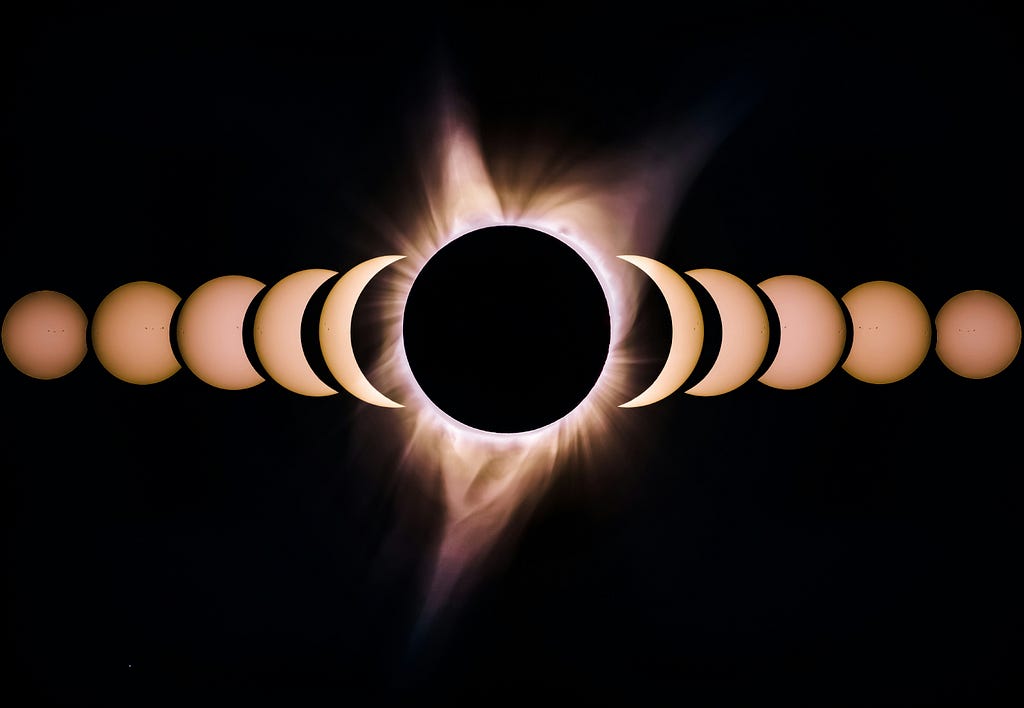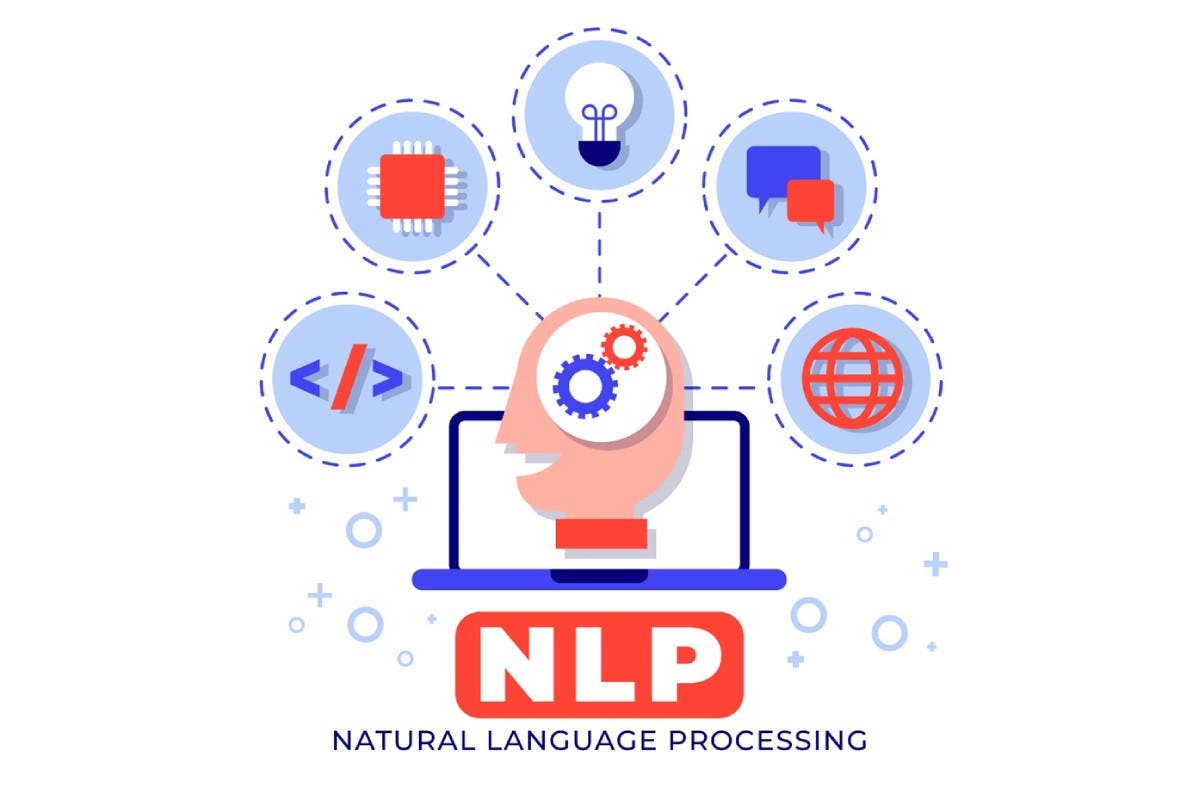The 2024 Solar Eclipse and its Connection to Albert Einstein 105 Years Later
Photo by Bryan Goff on UnsplashAs the world eagerly awaits the celestial spectacle of the solar eclipse on April 8, 2024, our collective gaze turns skyward, not only to witness nature’s awe-inspiring display but also to honor a profound scientific legacy. This cosmic event marks a convergence of celestial mechanics and human ingenuity, echoing the groundbreaking discoveries of Albert Einstein and reminding us of the enduring significance of solar eclipses in shaping our understanding of the universe.Eclipses have captivated humanity for millennia, their transient darkness inspiring awe, fear, and a thirst for knowledge. Yet it was Einstein’s theory of general relativity* that transformed these celestial events into invaluable laboratories for testing the fundamental laws of physics. His revolutionary insights challenged our very notions of gravity, space, and time, forever altering the course of scientific inquiry.At the heart of Einstein’s general theory of relativity lies the principle that matter and energy warp the fabric of spacetime, creating a curvature that governs the motion of objects — a stark departure from Newton’s conception of gravity as a force acting between masses. One of the theory’s most audacious predictions was that light itself should be deflected by intense gravitational fields, a phenomenon that could be observed during a total solar eclipse.It was the solar eclipse of May 29, 1919, that provided the first empirical evidence for Einstein’s groundbreaking ideas. Expeditions led by astronomers Arthur Eddington and Andrew Crommelin captured photographs of stars near the Sun’s position during the eclipse, revealing that their apparent positions had indeed shifted slightly — a result of their light being bent by the Sun’s immense gravitational pull. This observation, known as the “deflection of starlight by the Sun,” was a triumph for Einstein’s theory and a pivotal moment in the history of science.Today, as we prepare to witness the celestial alignment of the Sun, Moon, and Earth once again, we stand on the shoulders of giants whose curiosity and perseverance unveiled the profound mysteries of the cosmos. Solar eclipses continue to offer invaluable opportunities for scientific exploration, from studying the Sun’s elusive outer atmosphere to verifying the effects of gravitational lensing predicted by general relativity.But beyond their scientific significance, these fleeting moments of cosmic choreography remind us of our shared human experience — a collective awe that transcends borders and cultures. As the Moon’s shadow sweeps across the Earth’s surface, we are united in wonder, bearing witness to the intricate celestial mechanics that govern our universe.So, as you gaze upward on April 8, 2024, remember that you are not merely observing a celestial event; you are partaking in a centuries-old tradition of cosmic exploration, honoring the legacy of Einstein and the countless scientists who have dedicated their lives to unraveling the mysteries of the universe. In that moment, you become part of a timeless narrative, a cosmic dialogue between humanity and the heavens that has shaped our understanding of the world we inhabit.*The Theory of General RelativityAlbert Einstein’s theory of general relativity is a revolutionary theory that fundamentally changed our understanding of gravity, space, and time. Here is an overview of the theory and its key concepts:Principle of EquivalenceThe theory is based on the principle of equivalence, which states that gravitational and inertial forces are equivalent [6]. This means that the effects of gravity and acceleration are indistinguishable, and the force experienced in a gravitational field is the same as the force experienced in an accelerating reference frame.Spacetime CurvatureGeneral relativity describes gravity not as a force, but as a consequence of the curvature of spacetime caused by the presence of matter and energy [7]. Massive objects like stars and planets distort the fabric of spacetime around them, causing other objects to move along curved paths, which we perceive as the effect of gravity.Geometry of SpacetimeIn Einstein’s theory, spacetime is no longer a fixed, immutable background as in classical physics. Instead, it is a dynamic entity that can be distorted and curved by the presence of matter and energy [9]. The geometry of spacetime is described by Einstein’s field equations, which relate the curvature of spacetime to the distribution of matter and energy within it.Relativistic EffectsGeneral relativity predicts a variety of relativistic effects that have been experimentally verified, such as the bending of light by gravitational fields (gravitational lensing), the slowing of time in strong gravitational fields (gravitational time dilation), and the existence of black holes [8].Unification of Gravity and SpacetimeOne of the most profound aspects of general relativity is the unification of gravity with the concepts of space and tim

As the world eagerly awaits the celestial spectacle of the solar eclipse on April 8, 2024, our collective gaze turns skyward, not only to witness nature’s awe-inspiring display but also to honor a profound scientific legacy. This cosmic event marks a convergence of celestial mechanics and human ingenuity, echoing the groundbreaking discoveries of Albert Einstein and reminding us of the enduring significance of solar eclipses in shaping our understanding of the universe.
Eclipses have captivated humanity for millennia, their transient darkness inspiring awe, fear, and a thirst for knowledge. Yet it was Einstein’s theory of general relativity* that transformed these celestial events into invaluable laboratories for testing the fundamental laws of physics. His revolutionary insights challenged our very notions of gravity, space, and time, forever altering the course of scientific inquiry.
At the heart of Einstein’s general theory of relativity lies the principle that matter and energy warp the fabric of spacetime, creating a curvature that governs the motion of objects — a stark departure from Newton’s conception of gravity as a force acting between masses. One of the theory’s most audacious predictions was that light itself should be deflected by intense gravitational fields, a phenomenon that could be observed during a total solar eclipse.
It was the solar eclipse of May 29, 1919, that provided the first empirical evidence for Einstein’s groundbreaking ideas. Expeditions led by astronomers Arthur Eddington and Andrew Crommelin captured photographs of stars near the Sun’s position during the eclipse, revealing that their apparent positions had indeed shifted slightly — a result of their light being bent by the Sun’s immense gravitational pull. This observation, known as the “deflection of starlight by the Sun,” was a triumph for Einstein’s theory and a pivotal moment in the history of science.
Today, as we prepare to witness the celestial alignment of the Sun, Moon, and Earth once again, we stand on the shoulders of giants whose curiosity and perseverance unveiled the profound mysteries of the cosmos. Solar eclipses continue to offer invaluable opportunities for scientific exploration, from studying the Sun’s elusive outer atmosphere to verifying the effects of gravitational lensing predicted by general relativity.
But beyond their scientific significance, these fleeting moments of cosmic choreography remind us of our shared human experience — a collective awe that transcends borders and cultures. As the Moon’s shadow sweeps across the Earth’s surface, we are united in wonder, bearing witness to the intricate celestial mechanics that govern our universe.
So, as you gaze upward on April 8, 2024, remember that you are not merely observing a celestial event; you are partaking in a centuries-old tradition of cosmic exploration, honoring the legacy of Einstein and the countless scientists who have dedicated their lives to unraveling the mysteries of the universe. In that moment, you become part of a timeless narrative, a cosmic dialogue between humanity and the heavens that has shaped our understanding of the world we inhabit.
*The Theory of General Relativity
Albert Einstein’s theory of general relativity is a revolutionary theory that fundamentally changed our understanding of gravity, space, and time. Here is an overview of the theory and its key concepts:
Principle of Equivalence
The theory is based on the principle of equivalence, which states that gravitational and inertial forces are equivalent [6]. This means that the effects of gravity and acceleration are indistinguishable, and the force experienced in a gravitational field is the same as the force experienced in an accelerating reference frame.
Spacetime Curvature
General relativity describes gravity not as a force, but as a consequence of the curvature of spacetime caused by the presence of matter and energy [7]. Massive objects like stars and planets distort the fabric of spacetime around them, causing other objects to move along curved paths, which we perceive as the effect of gravity.
Geometry of Spacetime
In Einstein’s theory, spacetime is no longer a fixed, immutable background as in classical physics. Instead, it is a dynamic entity that can be distorted and curved by the presence of matter and energy [9]. The geometry of spacetime is described by Einstein’s field equations, which relate the curvature of spacetime to the distribution of matter and energy within it.
Relativistic Effects
General relativity predicts a variety of relativistic effects that have been experimentally verified, such as the bending of light by gravitational fields (gravitational lensing), the slowing of time in strong gravitational fields (gravitational time dilation), and the existence of black holes [8].
Unification of Gravity and Spacetime
One of the most profound aspects of general relativity is the unification of gravity with the concepts of space and time. Gravity is not a force acting over distances, but rather a manifestation of the curvature of spacetime itself [7]. This revolutionary idea challenged the long-held Newtonian view of gravity as a force acting between masses.
The theory of general relativity has had a profound impact on our understanding of the universe, from the formation and evolution of stars and galaxies to the behavior of black holes and the origin of the universe itself. It continues to be a cornerstone of modern physics and has withstood numerous experimental tests over the past century [8] [9].
Sources
- [6] Page 11 of “The Special and the General Theory-pdf.pdf”
- [7] Page 11 of “The Special and the General Theory-pdf.pdf”
- [8] Page 55 of “The Special and the General Theory-pdf.pdf”
- [9] Page 103 of “The Special and the General Theory-pdf.pdf”
The 2024 Solar Eclipse and its Connection to Albert Einstein 105 Years Later was originally published in Becoming Human: Artificial Intelligence Magazine on Medium, where people are continuing the conversation by highlighting and responding to this story.






















